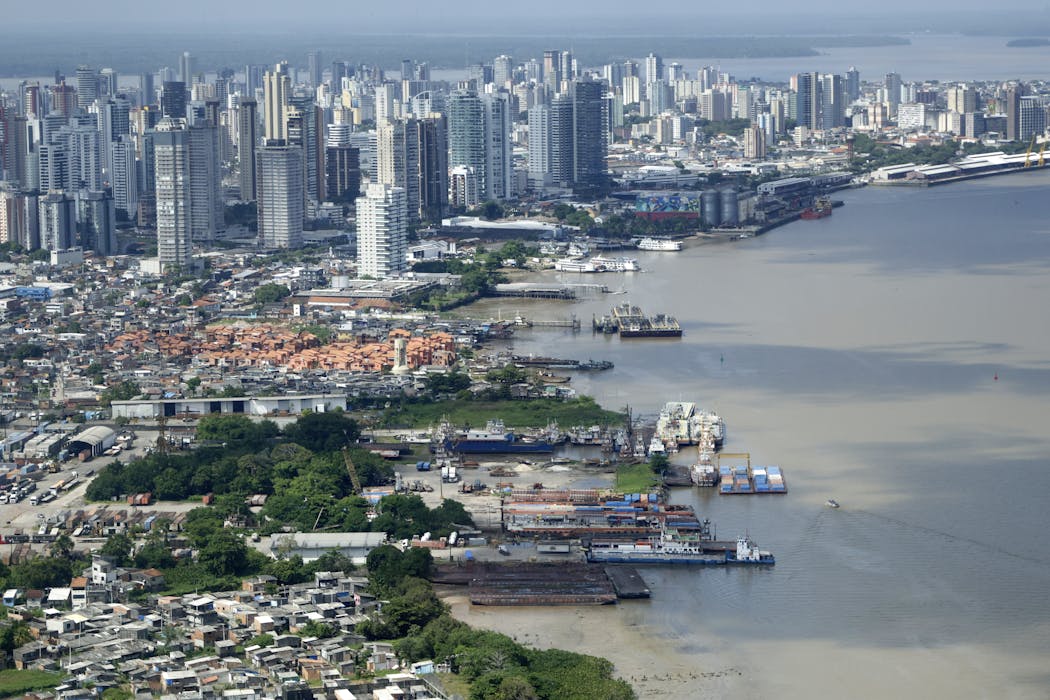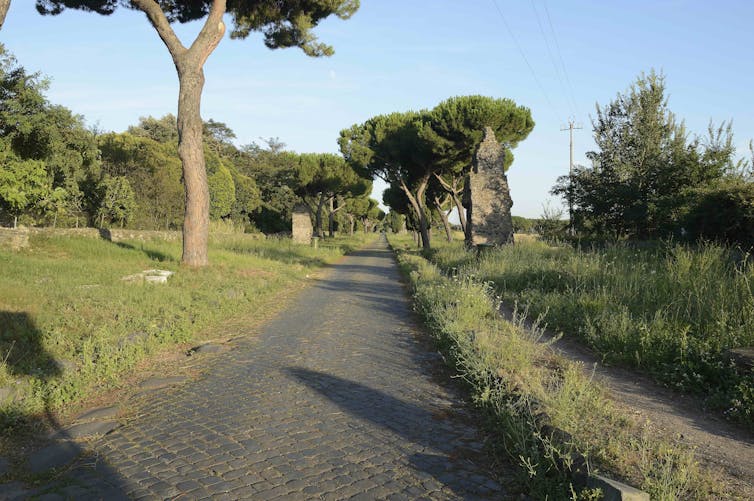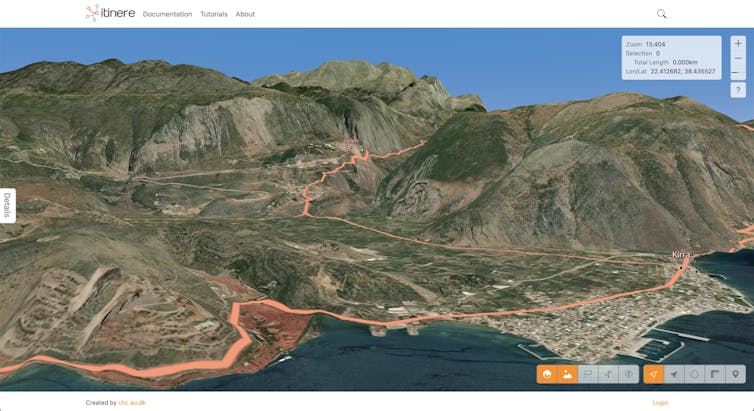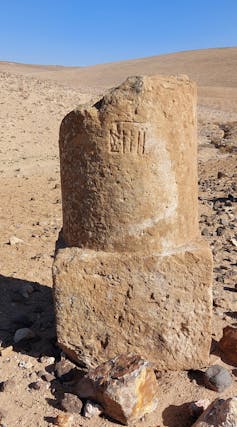Source: The Conversation – Global Perspectives – By Peter Edwell, Associate Professor in Ancient History, Macquarie University
A new statue unveiled in recent days in Iran depicts a Roman emperor in subjection to a Persian king.
Erected in Tehran’s Enghelab Square, the statue titled Kneeling Before Iran shows the emperor grovelling before Shapur I (who ruled around 242–270 CE).
But where did this imagery come from? And why has this statue gone up now?
The rise of Shapur
In the third century CE, a new dynasty known as the Sasanians came to power in ancient Iran.
Within a few years, the first Sasanian king, Ardashir I, threatened Roman territory in Mesopotamia (in modern-day Turkey, Iraq and Syria). The Romans had captured this territory from the Parthians, the predecessors of the Sasanians.
Now Ardashir wanted to recover some of the territory previously lost to the Romans. He met with some successes in the 230s. But his son and successor, Shapur I, took this to another level.
Shapur defeated an invading Roman army in 244 CE, leading to the death of the teen Roman emperor Gordian III.
In the 250s CE, Shapur invaded Roman territory across Iraq, Syria and Turkey. Two large Roman armies were defeated and dozens of cities were captured.
In 253 CE, Shapur captured the city of Antioch, one of the most important cities in the Roman empire. Some of its citizens were at the theatre and fled in terror as arrows rained down from above.
Capture of an emperor
While the Persian capture of Antioch was a major loss for the Romans, the events of 260 CE were earth-shattering.
After a battle between the Romans and Persians at Edessa (modern-day southern Turkey), the emperor Valerian was captured. This was the first and only time a Roman emperor was taken alive by the enemy.
Valerian was taken back to Persia, along with thousands of other captives.
Legendary stories about his fate as a captive later emerged. In one, Valerian and captive soldiers were forced to build a bridge over the river Karun at Shushtar. The remains, known as the Band-e Qayṣar (emperor’s bridge) can still be seen today.
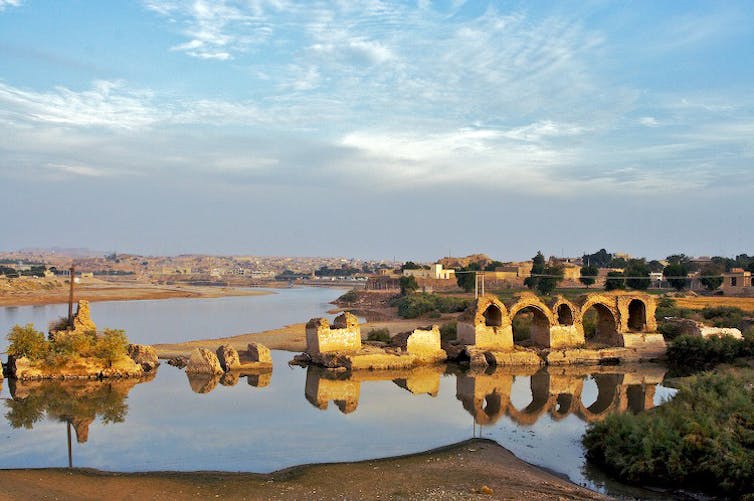
Ali Afghah/Wikimedia
In another tale, Shapur demanded Valerian stoop on all fours to be used as a footstool so the Persian king could mount his horse.
Shapur supposedly ordered Valerian’s body preserved, stuffed and placed in a cabinet after his death.
With this, Valerian’s humiliation was complete.
Depictions of Shapur’s victories over Rome were put up all over the Persian empire. A number of carved rock reliefs celebrating these victories survive.
Perhaps the most famous is at Bishapur in southern Iran, where Shapur built a magnificent palace.
In this image, Shapur is spendidly dressed and sits on a horse. Underneath the horse is the dead Gordian III. Behind is the captive Valerian clasped by Shapur’s right hand. The figure in front is the emperor Philip I (ruled 244–249 CE) who replaced Gordian. He is begging for the release of the defeated Roman army.

Marco Prins via Livius, CC BY
Shapur also carved an enormous inscription in three languages, which partly celebrated his great victories over the Romans. Known today as the SKZ Inscription, it can still be seen at Naqsh-i Rustam in southern Iran.
The great Roman empire had been thoroughly humiliated. The Persians took huge resources (including skilled people such as builders, architects and craftsmen) from the captured cities. Some cities in the Persian empire were populated with these captives.
A new statue celebrating an old victory
The new statue recently unveiled in Tehran appears to be a partial copy of a celebratory Sasanian rock relief at Naqsh-i Rustam.
The kneeling figure is reported to be Valerian. If it is indeed modelled on the Naqsh-i Rustam relief, then the kneeling figure is usually identified as Philip I (as in the original relief Valerian is standing before Shapur). Nevertheless, official statements identify the kneeling figure as Valerian.
Mehdi Mazhabi, head of Tehran’s Municipal Beautification Organization, is quoted in one report as saying:
The Valerian statue reflects a historical truth that Iran has been a land of resistance throughout history […] By implementing this plan in Enghelab Square, we aim to forge a bond between this land’s glorious past and its hopeful present.
Shapur’s great victories over the Romans are still a source of national Iranian pride.
The statue has been described as a symbol of national defiance following the American bombing of Iran’s nuclear facilities in June.
While Shapur’s victories occurred more than 1,700 years ago, Iran still celebrates them. The statue is clearly aimed at an internal audience following the American attacks. Only time will tell if it is also a warning to the west.
![]()
Peter Edwell receives funding from the Australian Research Council.
– ref. A Roman emperor grovelling to a Persian king: the message behind a new statue in Tehran – https://theconversation.com/a-roman-emperor-grovelling-to-a-persian-king-the-message-behind-a-new-statue-in-tehran-269367


